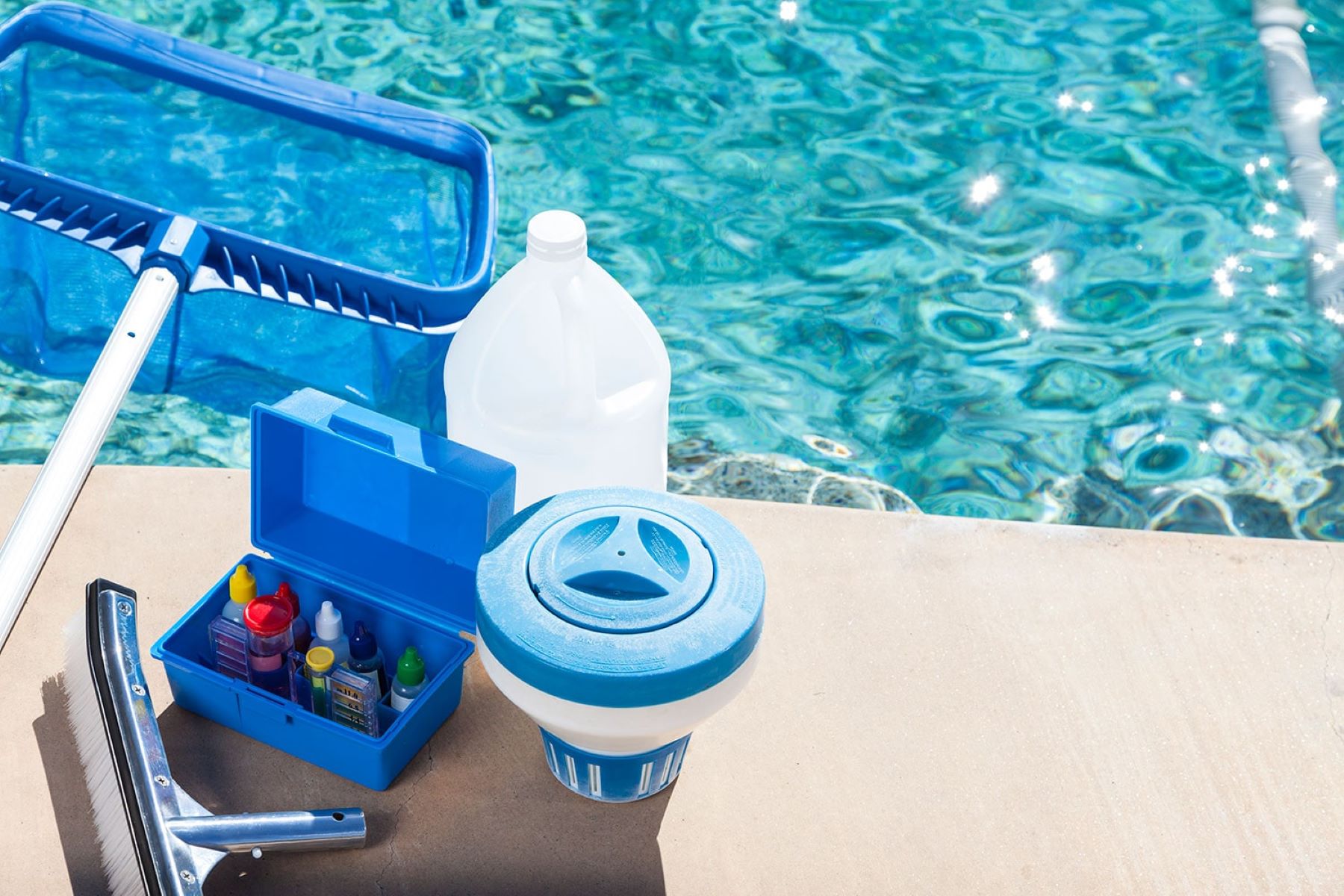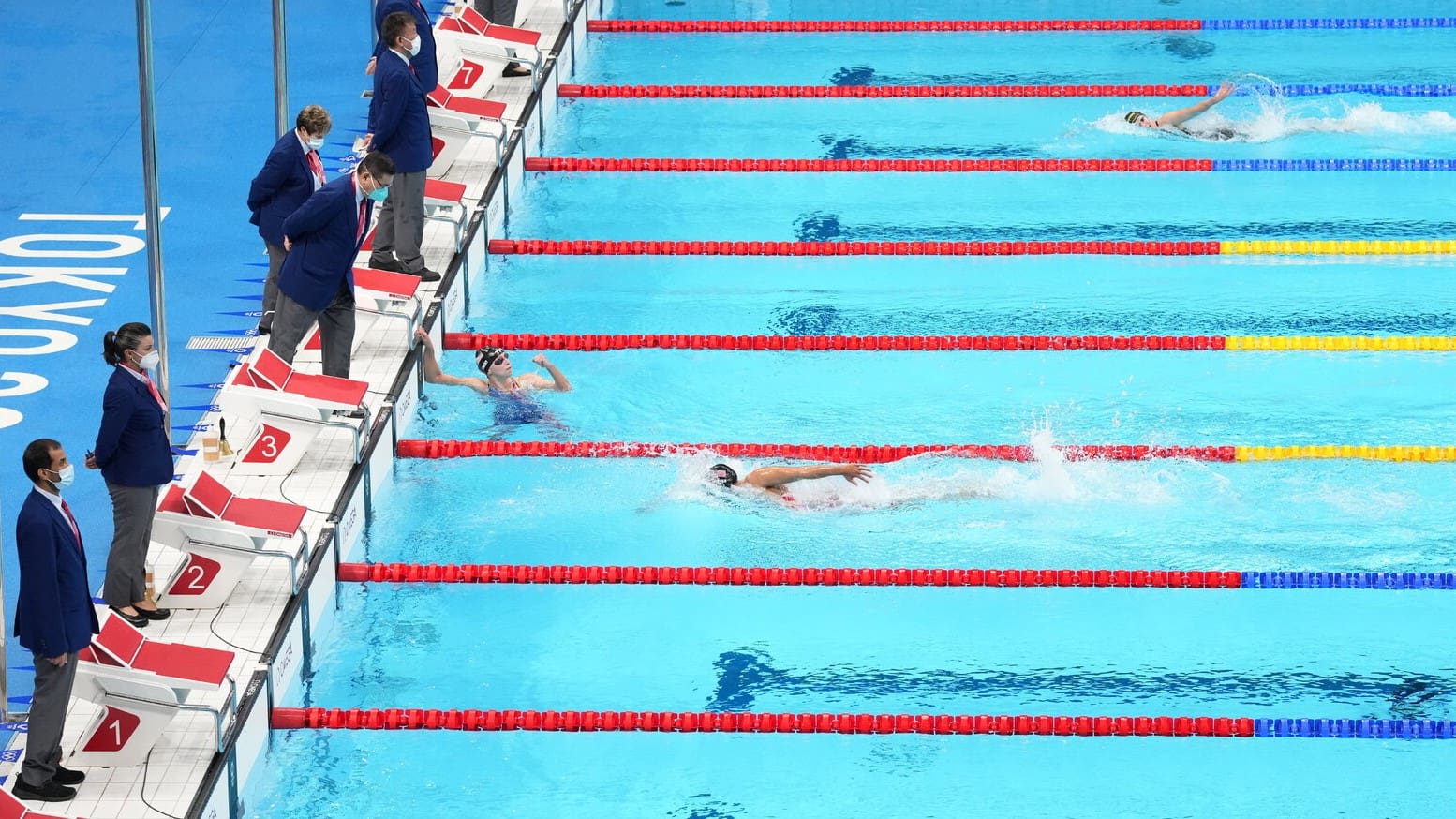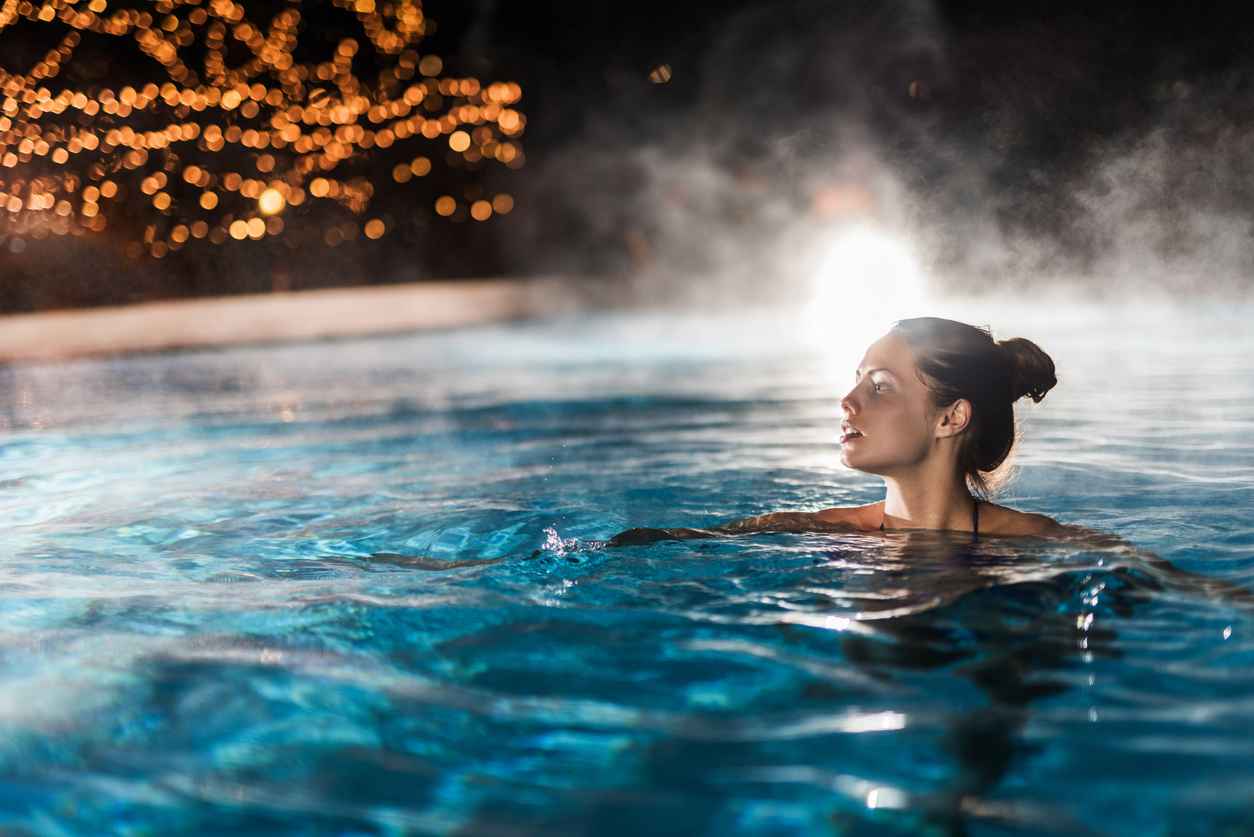Home>Gardening & Outdoor>Outdoor Recreation & Activities>How Much Space Do You Need For A Swimming Pool


Outdoor Recreation & Activities
How Much Space Do You Need For A Swimming Pool
Modified: February 23, 2024
Discover the perfect outdoor space for your swimming pool with our expert guide. Get the right dimensions and design for your outdoor recreation and activities.
(Many of the links in this article redirect to a specific reviewed product. Your purchase of these products through affiliate links helps to generate commission for Storables.com, at no extra cost. Learn more)
Introduction
When it comes to creating a refreshing oasis in your backyard, few additions can rival the allure of a swimming pool. The prospect of having a personal aquatic retreat for relaxation, exercise, and entertainment is undeniably appealing. However, before diving into the exciting world of pool ownership, it's crucial to understand the spatial requirements involved. From the dimensions of the pool itself to the surrounding area needed for safety and functionality, several factors come into play when determining the space necessary for a swimming pool.
In this comprehensive guide, we will delve into the essential considerations for determining the space requirements for a swimming pool. Whether you're envisioning a compact plunge pool or a sprawling lap pool, understanding the spatial prerequisites will pave the way for a successful and enjoyable pool installation. We will explore the minimum space needed for a functional pool, the ideal space for different pool sizes, and additional factors that can influence the spatial considerations. By the end of this guide, you will be equipped with the knowledge to make informed decisions and embark on your journey to transform your outdoor space into a captivating aquatic haven.
Key Takeaways:
- Ensure your swimming pool has enough space by considering factors like pool size, safety regulations, and future expansions. This creates a secure and enjoyable pool environment for your outdoor space.
- Different pool sizes require varying amounts of space for optimal functionality and aesthetics. From compact plunge pools to expansive lap pools, plan for clear areas, safety features, and potential upgrades to create a captivating pool environment.
Read more: How Do You Vacuum A Swimming Pool
Factors to Consider
When contemplating the installation of a swimming pool, various factors must be carefully considered to ensure a successful and enjoyable outcome. Understanding these crucial elements is essential for making informed decisions and avoiding potential challenges down the line.
1. Purpose of the Pool
The intended use of the pool is a fundamental factor that influences the space requirements. Are you envisioning a pool primarily for relaxation and leisure, or do you have aspirations for vigorous lap swimming and aquatic workouts? The intended purpose will dictate the ideal size and shape of the pool, which in turn impacts the space needed for its installation.
2. Pool Size and Shape
The dimensions of the pool, including its length, width, and depth, directly influence the spatial requirements. Compact plunge pools necessitate less space compared to expansive lap pools or freeform designs. Additionally, the shape of the pool, whether rectangular, oval, or custom-designed, will determine the spatial footprint required for its installation.
3. Safety Regulations
Adhering to safety regulations and building codes is paramount when planning a swimming pool. The surrounding space must accommodate safety features such as barriers, fencing, and adequate distance from other structures to ensure compliance with local regulations. Considering these safety requirements is crucial for determining the overall space needed for the pool.
Read more: How Do You Backwash A Swimming Pool
4. Accessibility and Functionality
The accessibility of the pool area and its functional aspects are vital considerations. Ample space for walkways, lounging areas, and equipment such as pool pumps and filters must be factored into the spatial planning. Additionally, the integration of features like poolside decks, landscaping, and outdoor furniture necessitates adequate space for a seamless and functional pool environment.
5. Environmental Factors
The surrounding environment plays a significant role in determining the space requirements for a swimming pool. Factors such as the topography of the land, existing vegetation, and proximity to neighboring structures can influence the available space for pool installation. Considering these environmental factors is crucial for ensuring a harmonious integration of the pool within its surroundings.
6. Future Expansion and Upgrades
Anticipating future expansion or upgrades to the pool area is a prudent consideration. Whether it involves adding water features, a pool house, or outdoor amenities, allowing for potential expansions within the initial spatial planning can prevent spatial constraints in the future.
By carefully considering these factors, you can effectively determine the spatial requirements for your swimming pool, setting the stage for a successful and harmonious integration of this captivating feature within your outdoor space.
Minimum Space Requirements
The minimum space required for a swimming pool is a critical consideration that directly impacts the feasibility and functionality of the installation. While the specific spatial requirements can vary based on factors such as pool size, shape, and local regulations, certain fundamental guidelines can provide valuable insights into the minimum space needed for a functional pool.
Read more: How Do You Fill In A Swimming Pool
1. Pool Dimensions
The dimensions of the pool play a pivotal role in determining the minimum space required for its installation. For a standard rectangular pool, the minimum clear area should extend at least 3 feet beyond the pool's perimeter. This allowance facilitates safe access for maintenance, cleaning, and potential repairs, ensuring that the pool remains easily accessible from all sides. Additionally, the space surrounding the pool should accommodate safety features such as pool barriers and fencing, adhering to local regulations and safety standards.
2. Safety Considerations
Incorporating safety measures is paramount when determining the minimum space requirements for a swimming pool. Adequate space must be allocated for safety barriers, which serve as essential protective measures, especially in households with children or pets. The space surrounding the pool should allow for the installation of secure fencing, gates, and other safety features, ensuring a safe and secure pool environment.
3. Functional Accessibility
Beyond safety considerations, the minimum space requirements should encompass functional accessibility for the pool area. This includes allocating space for walkways, equipment access, and potential additions such as poolside seating or lounging areas. By ensuring that the surrounding space is conducive to seamless movement and practical functionality, the pool area becomes more inviting and user-friendly.
4. Compliance with Regulations
Local building codes and regulations often stipulate specific spatial requirements for swimming pools to ensure safety and structural integrity. It is imperative to consult local authorities or building professionals to ascertain the minimum space requirements mandated by regulations. By adhering to these guidelines, you can ensure that the pool installation meets the necessary standards and complies with legal requirements.
Read more: How Do You Lower Ph In A Swimming Pool
5. Environmental Integration
Considering the integration of the pool within its surrounding environment is essential when determining the minimum space requirements. The available space should harmoniously accommodate the pool within the outdoor landscape, considering factors such as existing vegetation, topography, and proximity to other structures. This approach ensures that the pool becomes an integrated and aesthetically pleasing feature within the outdoor space.
By carefully evaluating these factors and adhering to the fundamental guidelines for minimum space requirements, you can lay the groundwork for a successful and well-planned swimming pool installation. This approach not only ensures compliance with safety standards and regulations but also sets the stage for a functional, accessible, and aesthetically pleasing pool environment.
Ideal Space for Different Pool Sizes
The ideal space for different pool sizes is a pivotal consideration that directly influences the overall aesthetics, functionality, and safety of the pool environment. Understanding the spatial requirements for various pool sizes is essential for making informed decisions and ensuring a harmonious integration within the outdoor space.
Compact Plunge Pools
For compact plunge pools, which are popular for smaller yards or intimate outdoor settings, the ideal space allocation is determined by the pool's dimensions and the surrounding environment. Typically, a compact plunge pool with dimensions of approximately 10 feet by 15 feet requires a clear area extending at least 6 feet beyond its perimeter. This allowance facilitates safe access for maintenance and cleaning while providing ample space for safety features such as fencing and barriers. Additionally, the surrounding space should accommodate functional elements such as seating or lounging areas, creating a cozy and inviting pool environment.
Medium-Sized Family Pools
Medium-sized family pools, often characterized by dimensions of 15 feet by 30 feet, require a more expansive space allocation to cater to the needs of active swimmers and recreational activities. The ideal space for such pools extends at least 8 feet beyond the pool's perimeter, allowing for comfortable movement and access around the pool. This additional space facilitates the integration of features such as poolside decks, outdoor furniture, and landscaping elements, enhancing the overall appeal and functionality of the pool area. Moreover, compliance with safety regulations and building codes remains a crucial consideration, necessitating adequate space for safety barriers and clear pathways.
Read more: How Do You Acid Wash A Swimming Pool
Expansive Lap Pools
Expansive lap pools, designed to accommodate dedicated swimmers and fitness enthusiasts, demand a generous space allocation to ensure optimal functionality and visual appeal. With dimensions often exceeding 25 feet in length, these pools require a clear area extending at least 10 feet beyond their perimeter. This substantial space allowance not only facilitates practical access for maintenance and safety measures but also enables the seamless integration of additional features such as outdoor seating areas, landscaping, and potentially, water features. The surrounding space should be thoughtfully planned to complement the elongated design of lap pools, creating a visually striking and inviting pool environment.
By considering the ideal space requirements for different pool sizes, homeowners can effectively plan for a well-proportioned and inviting pool environment that aligns with their preferences and lifestyle. This approach ensures that the pool area is not only aesthetically pleasing and functional but also adheres to safety standards and regulatory guidelines, culminating in a captivating outdoor oasis for relaxation, recreation, and enjoyment.
Additional Considerations
In addition to the fundamental factors and spatial requirements discussed earlier, several additional considerations play a crucial role in shaping the overall planning and execution of a swimming pool installation. These considerations encompass diverse aspects that contribute to the functionality, aesthetics, and long-term enjoyment of the pool environment.
1. Landscaping and Outdoor Amenities
Integrating landscaping elements and outdoor amenities around the pool area can significantly enhance its visual appeal and recreational potential. Thoughtfully planned greenery, such as lush foliage, flowering plants, and strategically positioned trees, can create a serene and inviting ambiance. Furthermore, the addition of outdoor amenities such as pergolas, outdoor kitchens, and seating areas can elevate the pool environment, providing spaces for relaxation, entertainment, and social gatherings.
2. Water Features and Lighting
Incorporating water features, such as cascading waterfalls, bubbling fountains, or elegant spillover spas, can infuse the pool area with a sense of tranquility and luxury. These features not only enhance the aesthetic allure of the pool but also contribute to a more immersive and sensory experience. Additionally, strategic lighting design, including underwater LED lights, pathway illumination, and ambient lighting, can extend the pool's usability into the evening hours while creating captivating visual effects.
Read more: How Do You Raise The Ph In A Swimming Pool
3. Maintenance and Cleaning Considerations
Planning for efficient maintenance and cleaning processes is essential for ensuring the long-term upkeep of the pool. Allocating space for equipment storage, such as pool covers, cleaning tools, and maintenance supplies, within close proximity to the pool area streamlines the upkeep process. Moreover, integrating features such as an outdoor shower or a designated area for rinsing off before entering the pool can help maintain water quality and cleanliness.
4. Environmental Sustainability
Embracing environmentally sustainable practices in the design and operation of the pool can contribute to eco-friendly and cost-effective solutions. This may include the integration of energy-efficient pool equipment, such as pumps and filters, as well as the incorporation of eco-conscious materials in the pool's construction. Additionally, exploring options for rainwater harvesting, solar heating, and water-efficient landscaping aligns the pool installation with sustainable principles.
5. Future Adaptability and Flexibility
Anticipating future needs and potential adaptations to the pool area is a prudent consideration. Allowing for flexibility in the initial spatial planning can accommodate future upgrades, expansions, or modifications. Whether it involves integrating a spa, reconfiguring the landscaping, or adding recreational features, a forward-thinking approach ensures that the pool environment remains adaptable to evolving preferences and lifestyle changes.
By carefully considering these additional aspects, homeowners can elevate the pool environment beyond its functional aspects, creating a captivating and harmonious outdoor retreat. These considerations not only contribute to the overall appeal and usability of the pool area but also reflect a holistic approach to creating a well-integrated and enjoyable outdoor space.
Conclusion
In conclusion, the spatial requirements for a swimming pool encompass a multifaceted landscape of considerations, ranging from the pool's dimensions and safety regulations to the integration of landscaping and outdoor amenities. By understanding the fundamental factors that influence the space needed for a swimming pool, homeowners can embark on a well-informed journey toward creating a captivating and functional aquatic retreat within their outdoor space.
The minimum space requirements for a swimming pool serve as the foundational framework for ensuring safety, accessibility, and compliance with regulations. By allocating adequate space beyond the pool's perimeter, incorporating safety measures, and considering functional accessibility, homeowners can lay the groundwork for a secure and user-friendly pool environment. Additionally, adherence to local building codes and regulations is paramount, underscoring the importance of consulting with professionals to ensure compliance and structural integrity.
Furthermore, the ideal space for different pool sizes provides valuable insights into tailoring the pool environment to specific preferences and lifestyle needs. Whether it's a compact plunge pool, a medium-sized family pool, or an expansive lap pool, the spatial planning should encompass not only the pool itself but also the surrounding areas for lounging, landscaping, and potential future expansions. This approach ensures that the pool area is proportionate, visually appealing, and conducive to diverse activities and relaxation.
Moreover, the integration of additional considerations, such as landscaping, water features, and environmental sustainability, elevates the pool environment to a realm of aesthetic allure, sensory delight, and eco-conscious practices. By thoughtfully incorporating these elements, homeowners can create a harmonious and inviting outdoor oasis that resonates with their lifestyle while embracing sustainable and efficient solutions for long-term enjoyment.
In essence, the spatial requirements for a swimming pool extend beyond mere measurements and dimensions; they encapsulate a holistic approach to crafting an outdoor space that embodies safety, functionality, aesthetics, and environmental mindfulness. By embracing these considerations, homeowners can embark on a transformative journey, culminating in the creation of a captivating and harmonious aquatic haven that enriches their outdoor living experience.
Frequently Asked Questions about How Much Space Do You Need For A Swimming Pool
Was this page helpful?
At Storables.com, we guarantee accurate and reliable information. Our content, validated by Expert Board Contributors, is crafted following stringent Editorial Policies. We're committed to providing you with well-researched, expert-backed insights for all your informational needs.











0 thoughts on “How Much Space Do You Need For A Swimming Pool”